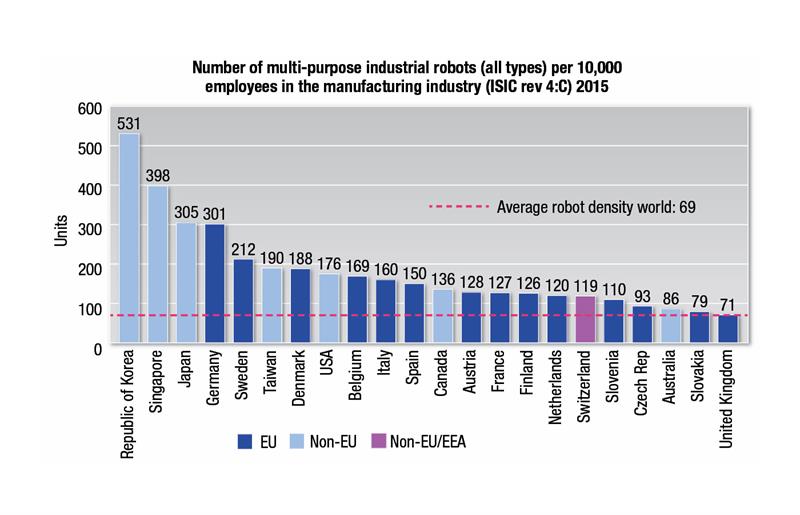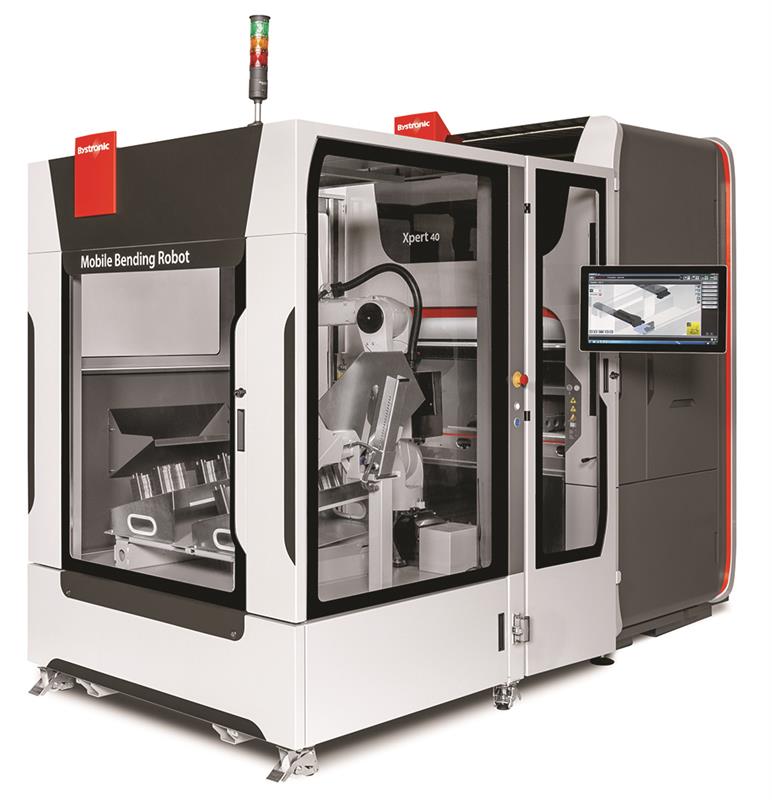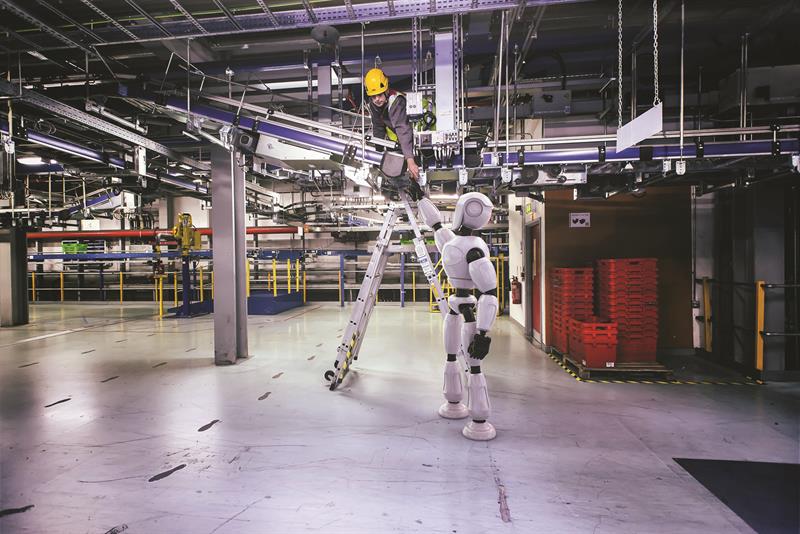Automation – taking in robots, autonomous vehicles, computers/software and artificial intelligence (AI) – is now a mainstream topic, with media reports aplenty screaming about the effects it will have on, mostly, non-manufacturing, white-collar occupations. A document that continues to be referenced is Oxford University’s 2013 study (https://is.gd/ijuhep). This looked at 700 of the most common occupations, ranking them from 0 (no risk of automation) to 1 (very high risk of automation). ‘Computer numerically controlled machine tool programmers’ come in at 0.36, 253 ahead of the least likely candidate of ‘Recreational therapists’ at 0.0028, while telemarketers got top billing at 0.99. (This is potential, not predicted.)
Looking at automation globally and in the round, a recent Raconteur infographic that draws on Oxford University data (https://is.gd/iquyan) highlighted that it is low-cost countries that have most to fear of job replacement. Countries with the greatest number of jobs at risk include Ethiopia (85%), China (77%) and Thailand (72%). OECD countries’ average is 57%, the USA’s figure is 47% and the UK’s 35%.
Still more gloom comes from a report in Wired magazine (https://is.gd/qiwake) about a meeting of AI experts in the Californian retreat of Asilomar. A quote from this article sums up the mood: “At a time when the Trump administration is promising to make America great again by restoring old-school manufacturing jobs, AI researchers aren’t taking him too seriously. They know that these jobs are never coming back.”
One of those citing the Oxford University data information recently has a more positive view, however. Neil Kinson, chief of staff at robotics firm Redwood Software (01628 601500), a company that automates back office and administrative processes in finance, supply chain and human resources, was quoted in July last year (https://is.gd/dujiru), saying: “This [robotic technology] is an opportunity to enrich the activities of the people that remain.” And he concluded: “Actually, what it can do, and would otherwise seem impossible, is retain the high value work that involves thought and judgement, and eliminate what is really highly mundane and repetitive.” Kinson suggests that the UK’s poor productivity performance, where non-manufacturing sector (white collar) productivity is a key factor, may be helped by such automation.
The gloomy Oxford University data has also been challenged in a very interesting May 2016 London School of Economics podcast (https://is.gd/igacix). In it, Leslie Willcocks, professor of technology work and globalisation at LSE, said that one of its weaknesses is that it takes no account of new jobs or careers created, it only looked at the negative of jobs 'destroyed'.
But this is automation at whole country level, not just manufacturing. Automation in UK manufacturing lags competitor countries, as the annual International Federation of Robotics (IFR) gross numbers regularly outline, and that is bad for employment, the organisation says.
 The IFR’s annual report always brings news of the UK's low robot usage. Prime Minister Theresa May has said there will be more money for robots and artificial intelligence as part of £2 billion extra government R&D funding by 2020. The British Automation & Robot Association’s president, Mike Wilson, responds in this video https://is.gd/bybYip
The IFR’s annual report always brings news of the UK's low robot usage. Prime Minister Theresa May has said there will be more money for robots and artificial intelligence as part of £2 billion extra government R&D funding by 2020. The British Automation & Robot Association’s president, Mike Wilson, responds in this video https://is.gd/bybYip
An IFR-supported report of 2012 by Metra Martech – ‘Positive Impact of Industrial Robots on Employment’ (https://is.gd/xoyuyu) says: “A growth in robot use over the next five years will result in the creation of one million high quality jobs around the world [by the end of 2016].”
And late last year, the organisation was pointing to the USA, and its automotive industry in particular but not exclusively, headlining a positive report “US-Industry: 135,000 new robots bring jobs back home” (https://is.gd/ifuleq). This looked at robot installations over the past six years. The IFR says that, worldwide, by 2019 more than 1.4 million new industrial robots will be installed in factories around the world, too, taking the total of all industrial robots installed worldwide to 2.6 million.
A major user of industrial robots globally is the automotive industry, with more than 600,000 of all installed units to be found here. And as a leading user, it is in the vanguard of the next wave of robotic automation, the use of AI. Japan’s Fanuc (02476 639669) is active here, working with GM to deliver zero down time (ZDT) via robots that feed data to the cloud where AI looks at this and predicts maintenance requirements ahead of breakdown. Fanuc has reportedly installed ZDT in thousands of robots across 27 GM factories in five countries (full story: https://is.gd/obukid).
ROBOT, TEACH THYSELF
In this instance, Fanuc is working with computer giant Cisco, but is also doing so with computer graphics expert NVIDIA. In October last year, the company said it would add NVIDIA-supported AI to its existing FIELD technology (Fanuc Intelligent Edge Link and Drive) to give robots the ability to teach themselves to do tasks faster and more efficiently. Says Fanuc: “By learning together, what used to take a single robot eight hours can now be done by eight robots in an hour.”
Robot maker ABB (01908 350300) is also treading the AI path, having invested in an AI company in late 2014 (https://is.gd/devida). This is all part of the bigger Industry 4.0 trend that sees other industrial automation giants connecting equipment and individuals, supported by cloud-based data analysis.
Siemens and Bosch Rexroth both have such technology platforms; the former with its 'MindSphere' (https://is.gd/giyihe) and the latter with the more recent 'ActiveCockpit' (https://is.gd/kogefu), both connect to factory equipment. Sandvik Coromant is also offering a cutting tool-centred platform via its CoroPlus suite (https://is.gd/honase).
At the shopfloor level, the business of loading and unloading parts is, perhaps, somewhat more mundane automation, but ever necessary. For lathes, if it’s bar you’re using, then magazine bar loaders offer automated running.
But when it’s billets, the automation solution is a robot or integrated gantry system (the latter a single-source solution often more favoured). Machine tool tending by robot is not common in the UK, although with the arrival of collaborative robots (cobots – those that can work alongside people) from Denmark’s Universal Robots (RAR UK Automation UK, 01462 670044), Machinery thought things might change in 2012 (https://is.gd/buzoca). Last year we were told that UK customers remain hesitant to buy such technology, though (https://is.gd/eleriw).
But a standard robot loading system (not cobot) is being used by subcontractor Rotec Engineering, which last year installed a Nakamura Tome NTRX 300 multi-tasking machining centre and same brand AS 200 mill-turn centre, along with two Halter, Fanuc-robot-based ‘Load Assistant’ load/unload robots one for the AS 200 (video: https://is.gd/oviger) and the other for use with multiple machines (both technologies from ETG, 01926 818418). These units have part dimension capacity from 10 to 230 mm. With the company soon to move into a new adjacent facility, called ‘The Advanced Manufacturing Centre’, this was the proving ground for such technology. But again, such installations are not a common occurrence in Machinery’s ‘in box’.
Last month the magazine also carried a feature about an innovative Fanuc-robot-loaded Okuma turning cell, but outside the UK, in Sweden at Sandvik Coromant’s Gimo site (https://is.gd/openaj).
For machining centres, the in-built option of pallet pools provides automation out of the box. For example, Aylesbury, Bucks-based CNF Precision Engineering has 32 pallets on its Matsuura MAM72-35V 5-axis machining centre (550 by 440 by 580 mm in X, Y and Z; 01530 511400), each one equipped with single-position MNG Zero Point units from WNT’s ‘MNG Zero Point’ base plate system (0114 249 6249) that supports fast fixture change. There’s also a Matsuura H-Plus 300-PC15 horizontal machine with 15 pallets (300 by 300 mm), again using WNT workholding, but this time double- and triple-location base plates.
Single part production is the norm, but unmanned running is achieved, with fast pallet set-up supported by WNT’s workholding system. “While the majority of our set-ups are single parts per pallet, the ability to mix and match vices on the MNG base plates is an obvious advantage and allows for extended unmanned operation,” says works manager Mark Baron.
For larger machining centre systems, there are third-party pallet systems, such as from Erowa (REM Systems, 01452 750581). Large aerospace subcontractor Dynamatic Oldland Aerospace is using Erowa technology at its Swindon site. This serves five Hermle 5-axis CNC machining centres (Geo Kingsbury, 02392 580371) with 200 pallets along a 30 m track. Installed by REM and Erowa Systems, the FMS line has three loading stations, ranging in component size from 200 by 200 mm to 1,300 mm long. Says managing director James Tucker: “We are trying to eliminate human error and achieve scrap rates of zero, which is why we aim to finish the part within the cell. We have removed the need for hand-operated deburring by adding a deburring cycle to the machines. Consistency and efficiency will secure our future within the aerospace industry, and investment in advanced systems such as the Erowa Dynamic robot cell provides the foundation for these goals.”
Also combining pallets and a robot, machining centre automation specialist Fastems (01322 282276) has revealed details of an innovative system that, compared to a typical robot production cell, provides greater flexibility for the complex machining of a large and diverse range of parts in variable quantities, says Fastems.
The set-up combines a Modula pallet system (from Italy, www.modula.eu), a Fanuc robot equipped with 450 mm capacity, variable force gripper, plus system management via Fastems’ Fastwizard robot controller. This combination services two DMG Mori 5-axis machining centres (02476 516120) at an unnamed company and location. The result is 72 hours’ unmanned running and six-side machining of parts between 40 and 250 mm in width, 40 to 280 mm in length and 10 to 80 mm in height, with a maximum blank weight of 32 kg (full details at: https://is.gd/gunapi).
SHEET METAL AUTOMATION
In the sheet metal arena, automated sheet handling is common and well established for profiling and punching (Trumpf, 01582 725335; Bystronic, 0844 848 5850; LVD, 01295 676800, for example).
Pressbrake automation has always lagged behind profiling, but there are growing numbers of UK examples. Most recently, Northampton-based subcontractor Recol Engineering became the UK’s first user of Amada’s new HG ARs automated pressbrake system (01562 749500) that employs a robot. This supports workpieces up to 1,000 by 800 mm weighing up to 20 kg. Reduced labour costs are a benefit, while set-up times have been cut from 45 minutes to, in some instances, just 90 seconds.

Hoping to boost pressbrake automation uptake is Bystronic, which has just introduced its Mobile Bending Cell – a 1 m by 40 tonne Xpert 40 pressbrake plus a cabinet-housed robotics unit that takes “just minutes to set”. Large volumes are processed in automated bending mode; for smaller batches, manual bending is possible, with the robotics cabinet easily moved to one side.
 TEXT BOX
TEXT BOX
IFR says that sales for robots helping in households worldwide will rise from 3.1 million in 2015 to 31 million over the forecast period of 2016-2019. This market is dominated by floor and vacuum cleaners plus lawnmowers, however. Indeed, the UK’s Dyson has intimated recently that it will incorporate AI into its products, citing its 360 Eye robot vacuum cleaner as a potential candidate.
At the more sophisticated end of the service robot spectrum, however, an EU Horizon 2020 research project, SecondHands (https://is.gd/ijuned), is looking at designing a robotic assistant that can offer help to a maintenance technician in a pro-active manner. Partners in this initiative include University College London and groceries specialist Ocado. The project commenced in May 2015 and finishes at the end of April 2020.
This article was published in the March 2017 issue of Machinery magazine.










